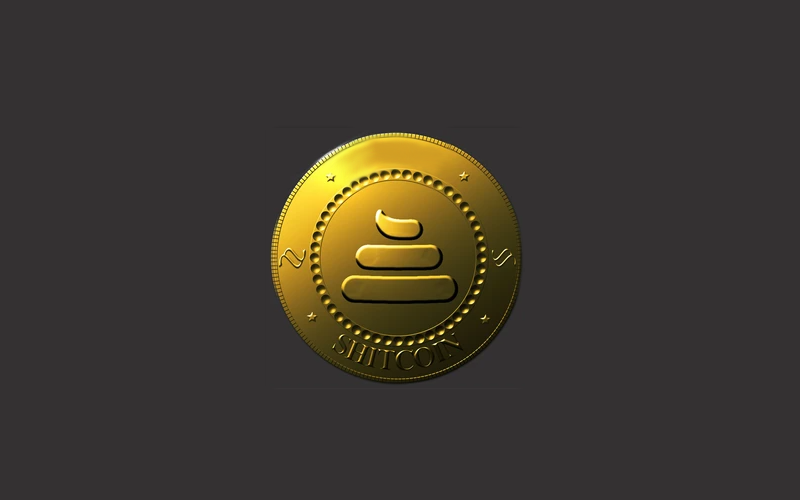Cryptocurrency is often referred to as the future of world currency. The success stories of Bitcoin and Ethereum have opened more users up to the profitability and utility of cryptocurrency. However, there are people trying to exploit the crypto craze through the creation of meaningless coins.
At this moment, there are around 4000 different cryptocurrencies available in the market. Although different coins are useful in their own ways, mathematically, it is relatively difficult for 4000 coins to co-exist. Some of them will not have utility, and their value will fall to zero. These are considered shitcoins.
In this article, we will provide insights on the characteristics of a shitcoin, and how to earn profits from trading shitcoins.
What is a shitcoin
A shitcoin is defined as a cryptocurrency with no practical use. It does not have strong fundamentals and lacks intrinsic value. Some shitcoins are also considered scamcoins that are only known as a result of the hype created by their developers and traders.
Another name for this is ‘pump and dump coin’.
How to spot shitcoins
No fundamentals
Shitcoins differ from reliable cryptocurrencies in that they do not have fundamentals. Despite the lack of an underlying asset in all crypto, more reliable cryptocurrencies always have some sort of utility or a sturdy project with a team of skilled coders to back it. Shitcoins do not have this and rely purely on publicity from ‘pump and dump’ schemes.
Supply
The main quality of a good currency is scarcity. This is one of the strongest attractions to Bitcoin, which has a fixed supply. The majority of shitcoins have a large supply to increase the market cap and earn the developers more money. An increased market cap also increases exposure for the coin, which adds to gaining more adopters.
Copy coins
These are coins that try to emulate another coin that has succeeded on the market. They have no real fundamentals or projects, nor are they a part of ecosystems, but the main selling point is the relation to a more popular coin.
The most recent example is Shiba Inu (SHIB), a coin named itself as the “Doge killer,” referring to the cryptocurrency Dogecoin. Nevertheless, SHIB has slowly moved out of the shell of a shitcoin with the recent launch of a pooling and staking exchange named ShibaSwap.
The rise of the SHIB token led to other animal-related coins being launched on the market to latch onto this new trend, such as Kishu Inu and Akita Inu. Following a price pattern of most shitcoins, both Kishu Inu and Akita Inu as well as other animal-themed coins during this period pumped very quickly then got dumped to almost $0.
Hype coins
Theoretically, all shitcoins are hype coins. Some hold virtually no value because they were just created for a temporary trend. As most shitcoins have very low value, they also have a very low market cap.
One of the most memorable examples of this was the ‘FuckElon’ token. This coin was created immediately after Elon Musk reportedly ‘pulled the rug’ under Bitcoin following an announcement that Tesla will not accept Bitcoin as payment due to the environmental impacts it has when mining.
Troll coins
Some coins are named after taboo topics or genitalia as a joke. It has no value or utility except a funny joke to make to a friend. Some of the most popular ones are TITcoin, ASScoin, or CUMROCKET.
Celebrity advertising
Celebrities are sometimes seen to wear a shirt representing a cryptocurrency or have a social media post endorsing them. Be careful with the content and structure of the social media post. Differentiate whether they are endorsing the coin as a personal preference or a paid advertisement. If they truly believe in a certain coin, there is no need for advertising.
Unlisted coins
When coins are listed on Binance or similar platforms, they go through a series of quality checks by a team of experts from the company. These platforms are partly responsible for listing only reliable coins, which makes them cautious in the inspection process.
They do not list shitcoins, or at least try not to. Hence, coins that are not available on these platforms have not gone through another layer of verification, indicating that there will be more risks involved and a possibility that it might be a shitcoin.
How to benefit from shitcoins
Many see shitcoins as “a great way to lose money” but if a market has losers, there will always be winners.
To succeed in trading shitcoins, one needs to make good speculations and join in as early as possible. The section above mentioned some shitcoins that have been popular. Be alert and stay connected to the crypto community to understand the sentiment of which coins will be pumped. Join in with the hype before it becomes too big and reap the benefits once more people buy and the prices are pushed up.
Use exchange sites such as UniSwap or PancakeSwap. Do not wait until it is listed on an established platform such as Binance, crypto.com, or coinbase. By the time it makes it to these platforms, traders with FOMO will start entering, which significantly inflates the price. This is usually a good time to sell and take profits.
HODLing may not be the best investment strategy for shitcoins. Generally, this is a short-term investment, so have a clear exit plan and sell-off once you have achieved your goals.
Conclusion
Shitcoins are coins with no fundamentals and obtain their success highly due to hype. They are a risky investment that can plummet your portfolio. However, if you invest with the right strategies and know the right time to exit, Shitcoins have the potential to yield high profits.
